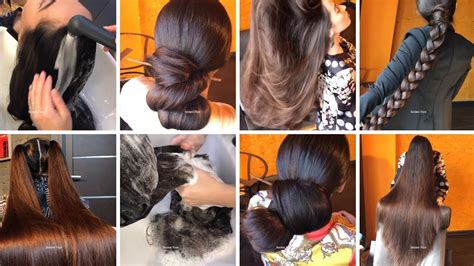Introduction

Hair and wigs are integral parts of our appearance, expressing our personalities and enhancing our confidence. With endless styles, colors, and materials available, navigating the world of hair and wigs can be both exhilarating and overwhelming. Whether you’re seeking a temporary transformation or a long-term solution, this comprehensive guide will empower you with 43 essential tips to elevate your look and maximize the benefits of hair and wigs.
Section 1: Choosing the Perfect Hair and Wig
1. Define Your Needs: Determine the purpose of your hair or wig, whether for a special occasion, daily wear, or a medical necessity.
2. Consider Your Hair Type and Texture: Match the texture and porosity of your natural hair to ensure a seamless blend.
3. Explore Fiber Types: Synthetic (less expensive, less natural-looking) vs. Human Hair (premium quality, higher cost).
4. Choose the Right Length and Volume: Consider your face shape and desired coverage to find the most flattering fit.
Section 2: Wig Basics for Beginners
5. Determine Your Cap Size: Measure your head circumference to ensure a snug and comfortable fit.
6. Understand Cap Constructions: Lace front, monofilament, and wefted caps offer different levels of breathability and natural appearance.
7. Style Your Wig: Brush your wig gently, use heat protection spray, and avoid high heat to prolong its life.
8. Maintain Your Wig: Wash and condition your wig regularly using specialized products designed for synthetic or human hair.
Section 3: Hair Weaves and Extensions
9. Clip-in Extensions: Provide instant length and volume without commitment, ideal for special occasions or temporary enhancements.
10. Tape-in Extensions: A less visible option that offers long-lasting results, suitable for daily wear.
11. Sew-in Extensions: Permanent extensions that are attached to your natural hair, providing maximum volume and coverage.
12. Micro-Link Extensions: Small, beaded links connect extensions to your hair, resulting in a natural-looking blend without tension.
Section 4: Hair Loss and Wigs
13. Reasons for Hair Loss: Medical conditions, genetics, and medications can cause hair thinning or loss.
14. Types of Hair Loss: Androgenic alopecia (male/female pattern baldness), alopecia areata (patchy hair loss), and telogen effluvium (temporary hair loss).
15. Benefits of Wigs for Hair Loss: Confidence boost, protection from the elements, and improved self-esteem.
16. Choosing a Wig for Hair Loss: Consider hair type, texture, color, and style to match your natural appearance.
Section 5: Hair and Wig Trends
17. Balayage and Ombre: Gradual color transitions create a natural and multidimensional look.
18. Texture and Layers: Asymmetry and textured layers add depth and movement to any hair or wig style.
19. Fringe and Bangs: Fringe can frame your face and add a touch of personality, while bangs can conceal a receding hairline.
20. Buns and Braids: Timeless and versatile hairstyles that enhance volume and create elegant or playful looks.
Section 6: Health and Safety
21. Scalp Care for Weaves and Extensions: Cleanse and moisturize your scalp regularly to prevent irritation and infection.
22. Wig Hygiene: Wash your wig frequently using specialized products to maintain its condition and prevent bacterial growth.
23. Allergy Testing: If you have sensitive skin, perform an allergy test on a small area of your scalp before using hair extensions or wigs.
24. Professional Installation: Seek professional assistance for complex wig installations or hair extension procedures to ensure proper application and avoid damage.
Section 7: Innovative Applications
25. Wig as Art (Wigism): Wigs as a canvas for expressive and creative hairstyles that defy conventions.
26. Immersive Theater and Cosplay: Wigs and hairpieces transform actors into characters, enhancing the realism and theatricality of performances.
27. Augmented Reality Hair: Digital hair simulations provide unique and customizable styling options in virtual or augmented reality experiences.
28. Therapeutic Hair: Wigs can boost self-esteem and provide emotional support for individuals with hair loss.
Section 8: Industry Statistics
29. According to the American Hair Loss Association, 50% of men will experience male pattern baldness by age 50.
30. The global hair care market is projected to reach $410.7 billion by 2027.
31. The wig industry is expected to grow at a rate of 6.7% from 2023 to 2028.
32. 70% of wig wearers use wigs for cosmetic purposes, while 30% use them for medical reasons.
Section 9: Expert Advice
33. “Wig customization is essential to achieve a natural and flattering fit.” – Emily O’Brien, Celebrity Hairstylist
34. “Don’t be afraid to experiment with different hair and wig styles to find what suits you best.” – Leah Noelle, Hair Extensions Expert
35. “Invest in high-quality hair and wigs for durability and a more realistic appearance.” – Sarah Jane, Wig Consultant
36. “Regular maintenance is crucial to extend the lifespan of your hair or wig.” – John Smith, Trichologist
Section 10: Conclusion
Embracing hair and wigs empowers you to express your individuality, enhance your confidence, and navigate the complexities of hair loss. By following these 43 tips, you can make informed choices, maintain the health of your hair and scalp, and elevate your appearance with confidence and style. Remember, the possibilities are endless when it comes to the world of hair and wigs.
